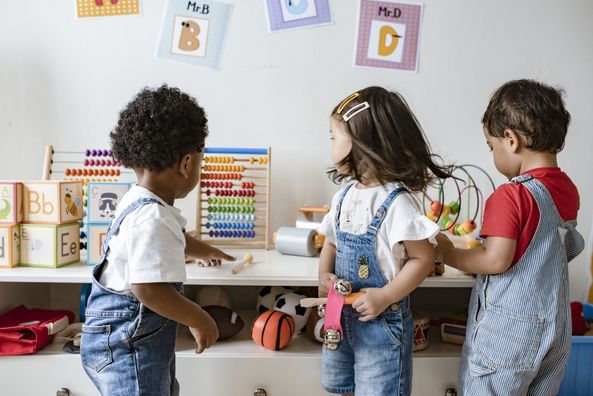While school-age kids are adjusting to learning remotely during this time when schools are closed due to the COVID-19 pandemic, families with infants and toddlers can also take this opportunity to incorporate developmental activities.
Quincy Medical Group (QMG) Clinical Coordinator of Pediatric Therapy Lynnae Glascock says children between the ages of 0 to 3 are developing rapidly. Enjoying some simple activities, such as building blocks and throwing a ball, provide many benefits to a child’s social, emotional, and physical development.
“Having children do something that requires motor activity and attention, including touching and manipulating objects is important whether it be an actual book or toy,” explained Glascock.
In a world of technology and gadgets, Glascock said simple play is what’s best for children in the long-run. She suggests the following at-home activities for parents.
Playing Ball
Throwing a ball back and forth is good for social and motor skills as well as visual tracking, Glascock said. First, tap the ball and call your child’s name. For example, “Hey Johnny, look at the ball.” Then throw it to them. Then, help your child visually focus on the ball and have them try to catch it. Add more social interactions by saying phrases like, “Now, throw it to mommy” and “I got it.”
Building Blocks
“If you don’t have blocks, plastic cups would work too. Basically, anything you can stack,” explained Glascock. Work together with your child to make a tall tower or build something and ask your child to build the same. This activity gives children something to manipulate while improving their fine motor skills. Building blocks also increase hand-eye coordination. After stacking, ask your child to be creative and build using their imagination.
Bubbles
Not only is bubble play an easy way to have fun, it’s also a fun way to work on a host of developmental skills. “Blow bubbles and ask your child to pop the bubbles by poking, kicking or clapping the bubbles. This introduces different actions and movements, as well as various language components —poke, kick, clap, stomp, etc,” shared Glascock. “Ask them to pop them with their hand, their knee, their feet, or their elbow. This helps introduce body parts.”
Running through a Sprinkler
On warmer days, water activities provide a fun way for kids to get physical activity.
“Running through the sprinkler increases coordination and promotes exercise. It also provides sensory exploration – the feeling of water on your skin and grass on your feet introduces different textures,” Glascock said.
Other activities Glascock suggests are riding on ride-on toys for gross motor skills, doing simple puzzles and shape sorters for visual skills, making a slot in a plastic container lid and putting coins in it one at a time for fine motor skills, and putting shaving cream on toys and have your children bathe the toys in water for sensory play.
For more information on Pediatric Therapy services at QMG, visit quincymedgroup.com or call 217−222−6550, ext. 3418.
Health Topics:







